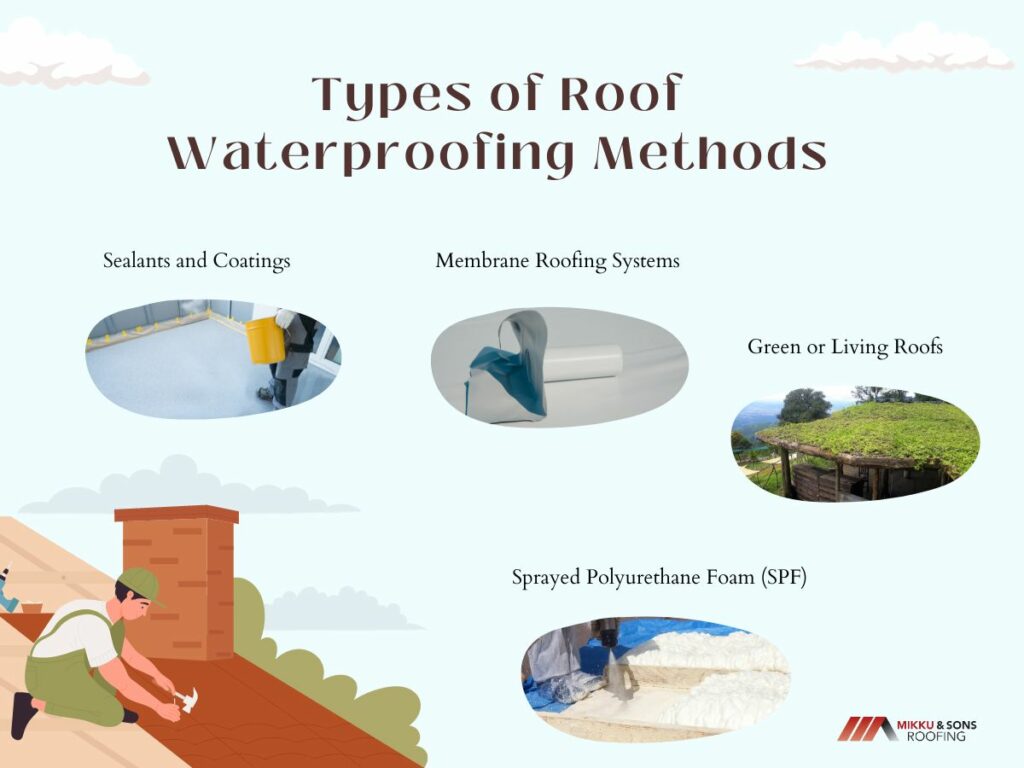

As a homeowner, few things are more important than protecting your investment from the elements. One of the key ways to do this is by ensuring that your roof is properly waterproofed. Not only can water damage cause significant structural problems, but it can also lead to mold growth, mildew, and pest infestations.
In this blog, we'll take a closer look at why waterproofing your roof is a must-do for every homeowner and provide tips and advice on how to get started. From identifying potential leaks to choosing the right products, we have everything you need to protect and secure your roof.
So, whether you're a seasoned DIY enthusiast or just looking for expert advice, read on to learn more about the importance of waterproofing your roof.
A well-maintained roof is the unsung hero of your home's structural integrity. One crucial aspect of roof care that often goes overlooked is waterproofing.
Roof waterproofing is applying specialized materials and techniques to create a barrier that prevents water from infiltrating your roof and causing damage to your home's interior. Essentially, it's your roof's armor against the elements.
Some common roofing materials and their susceptibilities to water damage help you make informed choices for your roofing needs and understand the importance of regular maintenance.
Roof leaks are more than just a nuisance; they can cause significant damage to your home's structure and interior. Waterproofing serves as your roof's first line of defense against water intrusion. It creates a barrier that prevents water from seeping through the roofing materials and into your home.

A well-maintained roof is essential for protecting your home from the elements, but over time, it can succumb to wear and tear, resulting in water damage. Below are key interior and exterior signs that indicate potential water damage on your roof, helping you identify issues before they escalate into costly problems.
Your roof stands as the fortress protecting your home from the elements. When safeguarding your investment, roof waterproofing is an indispensable measure.
Not only does it prevent costly repairs, but it also fortifies your home's structural integrity, enhances energy efficiency, and extends the lifespan of your roof.
One of the foremost advantages of roof waterproofing is its ability to avert the financial burden of extensive repairs. Without proper waterproofing, your roof becomes susceptible to water damage, leading to leaks, rot, and structural deterioration.
Addressing these issues after they occur can be significantly more expensive than implementing preventive measures. Roof waterproofing is a proactive shield, saving you money in the long run.
Water damage can wreak havoc on your home's structural components. It can weaken the foundation, compromise the integrity of walls and ceilings, and lead to mold and mildew development.
Roof waterproofing forms a robust defense against these threats. Keeping moisture out helps maintain the strength and stability of your home's structure, ensuring a safe and secure living environment.
Roof waterproofing also contributes to increased energy efficiency. When your roof is watertight, it prevents air leaks and heat loss.
This means your heating and cooling systems can operate more efficiently, reducing energy consumption and lowering utility bills. Maintaining a consistent indoor temperature enhances overall comfort and minimizes temperature fluctuations.
Your roof is exposed to a barrage of weather-related stressors year-round. Sunlight, rain, snow, and temperature fluctuations can impact roofing materials. Without proper waterproofing, these materials can deteriorate more quickly.
Roof waterproofing helps prolong the lifespan of your roof by providing an extra layer of protection against the elements. This means you won't have to replace your roof as frequently, saving you both time and money.
When safeguarding your property from the elements, one of the most critical aspects is ensuring your roof is effectively waterproofed. Various methods are available to achieve this goal, each with unique advantages and suitability for different types of roofs and applications.

Sealants and coatings are among the most common and cost-effective roof waterproofing methods. They involve applying a waterproof coating directly onto the existing roofing material.
These coatings create a seamless barrier that prevents water infiltration. They are especially useful for flat or low-slope roofs. Silicone, acrylic, and elastomeric coatings are popular choices, offering specific advantages such as UV resistance and flexibility.
Membrane roofing systems are widely recognized for their durability and effectiveness in waterproofing. These systems involve the installation of a waterproof membrane, often made of materials like modified bitumen, EPDM, or TPO, over the existing roofing structure.
Membrane roofs are known for their resistance to water and UV radiation, making them a preferred choice for commercial and residential properties.
Sprayed polyurethane foam (SPF) is a versatile and highly effective roof waterproofing method. It involves the application of a foam material directly onto the roof's surface. The foam expands and forms a seamless, watertight barrier.
SPF is known for its exceptional insulation properties, making it a popular choice for energy-efficient roofing systems. It also provides excellent protection against water infiltration.
Green or living roofs are a unique and eco-friendly approach to roof waterproofing. These roofs feature a layer of vegetation, such as grass, plants, or even small trees, planted on top of a waterproofing membrane.
The vegetation acts as a natural barrier, absorbing rainwater and reducing runoff. Green roofs provide effective waterproofing, offer insulation benefits, and promote environmental sustainability.
Roof waterproofing is a crucial step in ensuring the longevity and durability of your home's roof. It protects your investment from costly repairs and potential structural damage. However, deciding to undertake waterproofing as a DIY project or hire a professional comes with its own considerations.

While DIY waterproofing can be cost-effective, certain situations warrant hiring a professional:
The cost of waterproofing can vary widely depending on several factors:
Protecting your home from the elements begins with safeguarding its first line of defense: the roof. Whether you're dealing with a new construction project or looking to enhance your existing roof's resilience, understanding the essential steps to waterproof your roof is crucial.
Achieving a waterproof roof is the beginning of safeguarding your home against the elements. Long-term maintenance is crucial in preserving your roof's integrity and preventing water damage.
The decision to undertake DIY waterproofing or hire professionals involves considering the complexity of your roof, your level of expertise, and safety concerns. While DIY projects can save costs, professional assistance may be necessary for intricate or high-risk situations.
Taking a proactive approach to roof waterproofing, along with regular inspections and maintenance, will help prolong the life of your roof, protect your home's structural integrity, and provide peace of mind during rainy seasons.
Whether you choose the DIY route or opt for professional help, the goal remains: ensuring a dry and secure home through effective roof waterproofing and maintenance.
